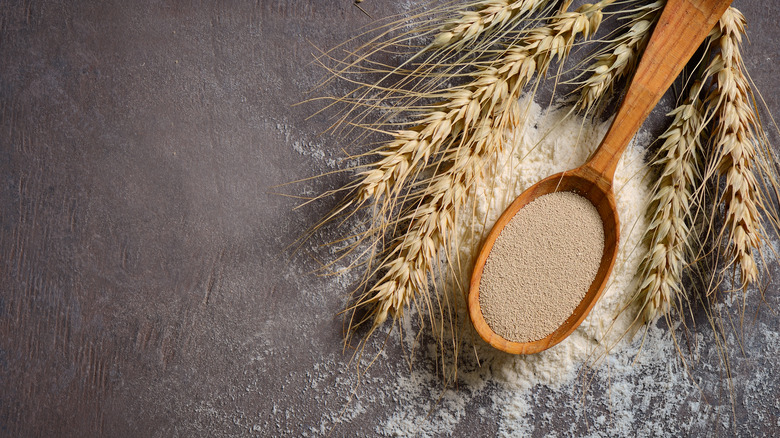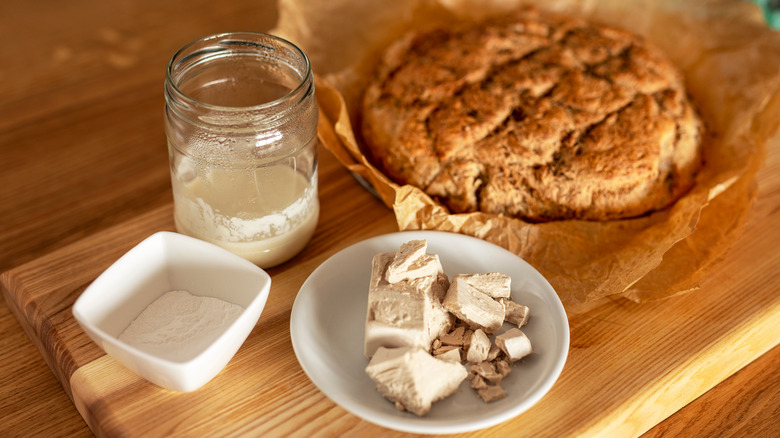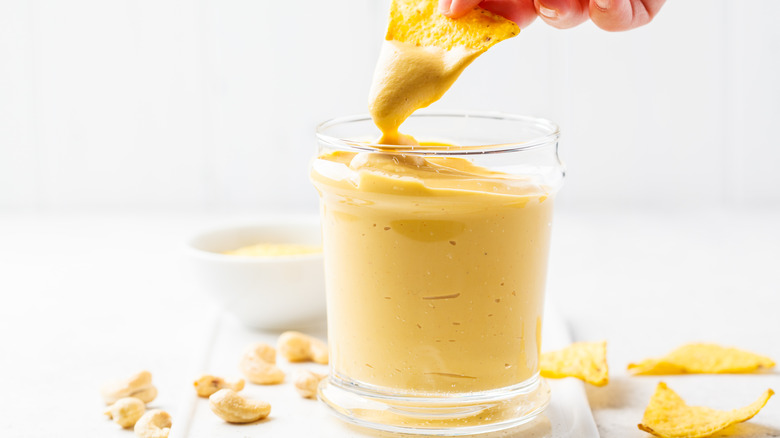The Real Difference Between Active Dry Yeast And Nutritional Yeast
Despite sounding similar, active dry yeast and nutritional yeast are not the same things. So, what's the deal with that? They both have the word "yeast" in it, so they've got to be at least sort of similar, right? Maybe even interchangeable? The short answer: No, they're not at all interchangeable. But before we get into what makes them so different, let's talk about what yeast is in general.
Yeast is a one-celled organism, called Saccharomyces cerevisiae, according to BakeryandSnacks, and a warm environment and moisture are imperative in order for it to live. The site notes that yeast converts its food via the process of fermentation which results in the release of carbon dioxide and ethanol.
There are two primary categories of yeast: brewer's yeast and baker's yeast. Within those two categories are eight varieties: Active dry, fresh, liquid, and instant are used in baking, yeast extract and nutritional are used in cooking, and top-fermenting and bottom-fermenting are used in brewing, cites . Of those different types, we're going to be comparing active dry and nutritional.
How these two yeasts are made and used
If you're making bread or another type of baked good, chances are the recipe will call for active dry yeast. Active dry yeast "requires dissolving in a warm liquid to activate it," according to The Spruce Eats. Emphasis on the word "warm," though. Anything hotter than 110 degrees Fahrenheit will actually kill it. If you're looking for something to make with that active dry yeast that has been sitting in your cabinet or refrigerator, say hello to copycat Olive Garden breadsticks.
Nutritional yeast, on the other hand, is a "dead" yeast, according to Bon Appétit, that's usually used to provide a creamy texture and cheese-like flavor on things like pasta and popcorn. And as The Spruce Eats explains, nutritional yeast is pretty low maintenance and doesn't require any proofing before adding it to a recipe since it's not live. You can pretty much just toss it as-is in something like mac and cheese or use it to make a savory, vegan-friendly cashew cheese.
Nutritional differences between active dry and nutritional yeast
Livestrong writes that you can only gain benefits from active dry yeast after proofing and baking it. One tablespoon (which makes approximately one to two loaves of bread) touts "5 grams of protein, 5 grams of carbohydrates, and 3 grams of fiber. It also offers small amounts of calcium, B vitamins and potassium," according to Livestrong. While it certainly contains some nutrition, the outlet explains that it's rather insignificant in the grand scheme of your dietary needs.
Now, onto nutritional yeast — one tablespoon features "6 grams of protein, as well as the 5 grams of carbs and 3 grams of fiber," (via Livestrong). Contrary to active, dry yeast, nutritional yeast is often fortified with B12 (although, this isn't always the case; don't forget to read the ingredient list). When fortified with B12, nutritional yeast can be super beneficial for vegans and vegetarians who might not normally get enough of the vitamin in their diet.


